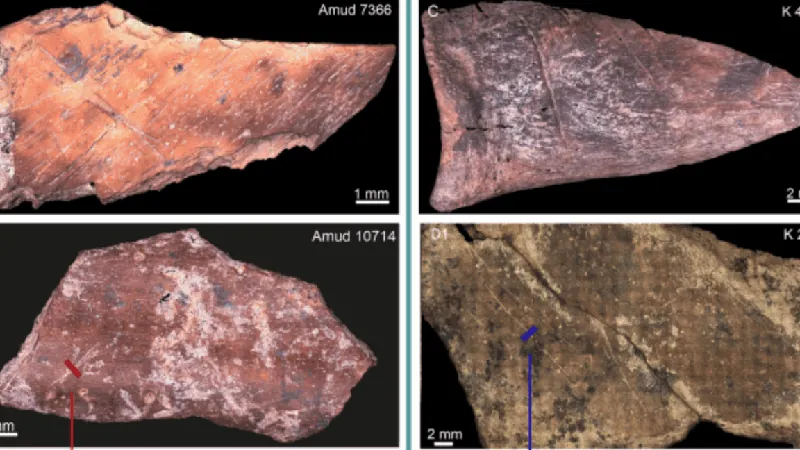
Neanderthals' Culinary Rivalry: A Tale of Two Caves
2025-07-18
Author: Ken Lee
Ancient Palate Preferences Unveiled
Picture a time 60,000 years ago in northern Israel, where two distinct groups of Neanderthals thrived just a short distance apart yet dined in dramatically different ways. A captivating study led by archaeologist Anaëlle Jallon from Hebrew University of Jerusalem sheds light on these ancient culinary customs by examining animal bones from two Neanderthal sites: Kebara and Amud.
Diverse Diets in Similar Habitats
Despite living within a stone’s throw of each other—and sharing a bountiful environment filled with deer, gazelles, wild goats, and more—the diets of these Neanderthals diverged significantly. Think of it as a prehistoric food rivalry akin to New York versus Chicago’s iconic pizza styles.
Cavernous Kitchens: Kebara vs. Amud
The Kebara cave, nestled on Mount Carmel's western slopes, reveals a diverse menu. Archaeologists uncovered remains that suggest these Neanderthals indulged in a variety of meats, showcasing an adventurous spirit in utilizing every part of their prey.
Conversely, the Amud cave dwellers were fixated on gazelles, often preferring the legs over larger game. Their approach to meat preparation indicated a preference for slightly older, perhaps drier, meat—after all, their bones bore more complex cut marks, hinting at different butchering techniques.
Cooking Style Showdown: Fresh vs. Aged
Interestingly, the condition of the bones found at both sites further illustrates their culinary differences. While Kebara’s bones were often intact and appeared unburned, indicating a different cooking method, Amud’s exhibit fragmented traces, suggesting a tendency to cook or burn meat—contrasting table manners that might surprise each group if they ever dined together!
Tools of the Trade: Local Styles Emerge
Butchering tools from both caves underscore the notion that these Neanderthals weren’t just primitive beings but rather culturally rich. While the basic techniques used across both groups were similar, subtle variations emerged—each group developed its own unique style, hinting at a complex social structure and traditions around food preparation.
A Glimpse Into a Richer Past
This study reveals that Neanderthals weren’t just simple hunters; they were cultural beings with varied lifestyles and culinary preferences influenced by their immediate surroundings. Imagine what other fascinating aspects of Neanderthal life remain hidden in the shadows of history, just waiting to be uncovered!
As we explore these ancient culinary contrasts, we gain a deeper understanding of our Neanderthal relatives, showcasing a rich tapestry of life that thrived on the fringes of humanity.



 Brasil (PT)
Brasil (PT)
 Canada (EN)
Canada (EN)
 Chile (ES)
Chile (ES)
 Česko (CS)
Česko (CS)
 대한민국 (KO)
대한민국 (KO)
 España (ES)
España (ES)
 France (FR)
France (FR)
 Hong Kong (EN)
Hong Kong (EN)
 Italia (IT)
Italia (IT)
 日本 (JA)
日本 (JA)
 Magyarország (HU)
Magyarország (HU)
 Norge (NO)
Norge (NO)
 Polska (PL)
Polska (PL)
 Schweiz (DE)
Schweiz (DE)
 Singapore (EN)
Singapore (EN)
 Sverige (SV)
Sverige (SV)
 Suomi (FI)
Suomi (FI)
 Türkiye (TR)
Türkiye (TR)
 الإمارات العربية المتحدة (AR)
الإمارات العربية المتحدة (AR)